Posted on Modified on Posted by National School Choice Week Team
New Survey: America’s Families are Rethinking K-12 Education
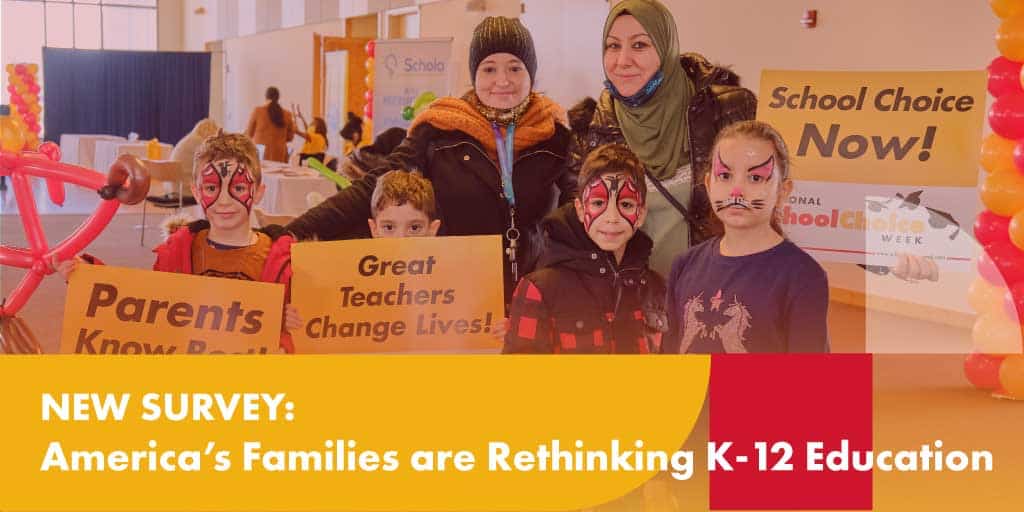
K-12 education in America is experiencing a once-in-a-generation transformation, as tens of millions of parents rethink their children’s education and make crucial decisions about how and where their children learn. From exploring their school choice options to expressing interest in nontraditional learning models, parents are eager to find better or supplementary learning environments for their children. Parents don’t see this a dichotomous; a majority of them are open to change even as two thirds of all parents (67.9 percent) remain largely satisfied with the schools their children attend.
What do we mean by rethinking? Parents choosing new schools, parents considering options more frequently, and parents seeking to round out their children’s education by thinking outside the box and exploring new or nontraditional learning options.
These trends are led by Black and Hispanic parents, who are significantly more likely to explore the education options available for their children than white parents. Young millennial parents – those between the ages of 18 and 29 – are also rethinking their children’s K-12 education in overwhelming numbers.
These findings are from two census-balanced surveys of a combined 3,820 U.S. parents of school-aged children, conducted from January 3-6, 2023.
Download toplines here. Cross tabs are available upon request.
Key Findings
Half of all parents considered or are considering choosing new schools for their children.
At any point in the past year, did you think about, consider, search for, or choose a new or different school or learning environment for any of the school-aged children in your household? (N=3,820)
| TOTAL | AGE | RACE OR ETHNICITY | ||||||
| 18-29 | 30-44 | 45-60 | > 60 | Black or African American | Hispanic or Latino | White (Non-Hispanic) | ||
| Yes | 53.7% | 63.3% | 55.7% | 49.7% | 42.5% | 64.5% | 64.6% | 46.2% |
| No | 46.3% | 36.7% | 44.3% | 50.3% | 57.5% | 35.5% | 35.4% | 53.8% |
16.6 percent of all parents chose new schools for their children within the past year, 11.3 percent considered new schools, and 25.8 percent are currently considering new schools.
In total, 53.7 percent of parents considered or are considering choosing a new school.
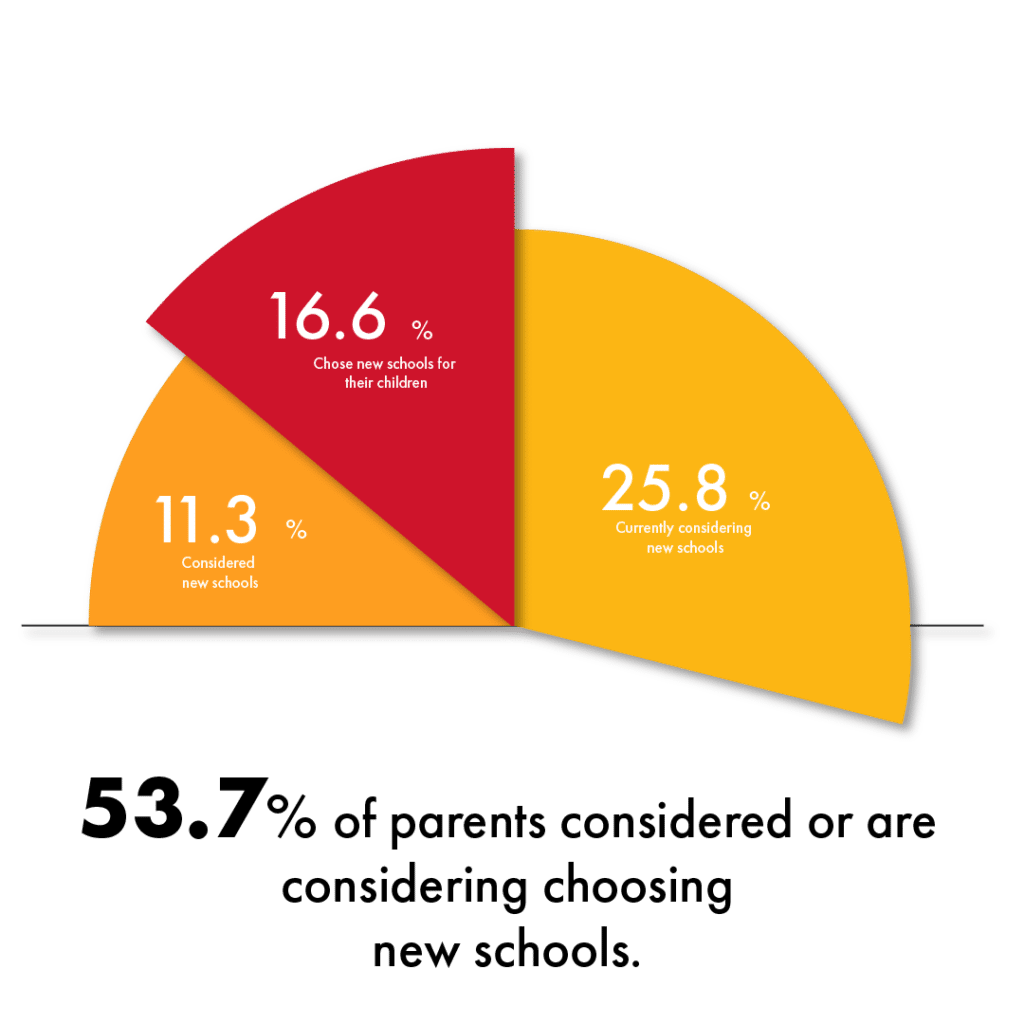
Black, Hispanic, and young millennial parents were most likely to consider new schools.
Do you think that your community offers the right number of schooling options for parents to consider for their children, not enough options, or too many options? (N=1,651)
| TOTAL | AGE | RACE OR ETHNICITY | ||||||
| 18-29 | 30-44 | 45-60 | > 60 | Black or African American | Hispanic or Latino | White (Non-Hispanic) | ||
| The right amount of options | 48.3% | 39.8% | 49.1% | 51.3% | 58.3% | 50.4% | 43.5% | 51.9% |
| Not enough options | 48.1% | 53.4% | 47.8% | 46.2% | 39.7% | 45.3% | 52.8% | 45.2% |
| Too many options | 3.7% | 6.8% | 3.1% | 2.5% | 1.9% | 4.3% | 3.7% | 2.9% |
64.5 percent of Black parents and 64.6 percent of Hispanic parents considered new schools for their children, compared with 46.2 percent of white parents.
63.3 percent of parents aged 18-29 explored, are exploring, or plan to explore school choice options for their children, compared with 55.7 percent of parents aged 30-44, 49.7 percent of parents aged 45-60, and 42.5 percent of parents over the age of 60.
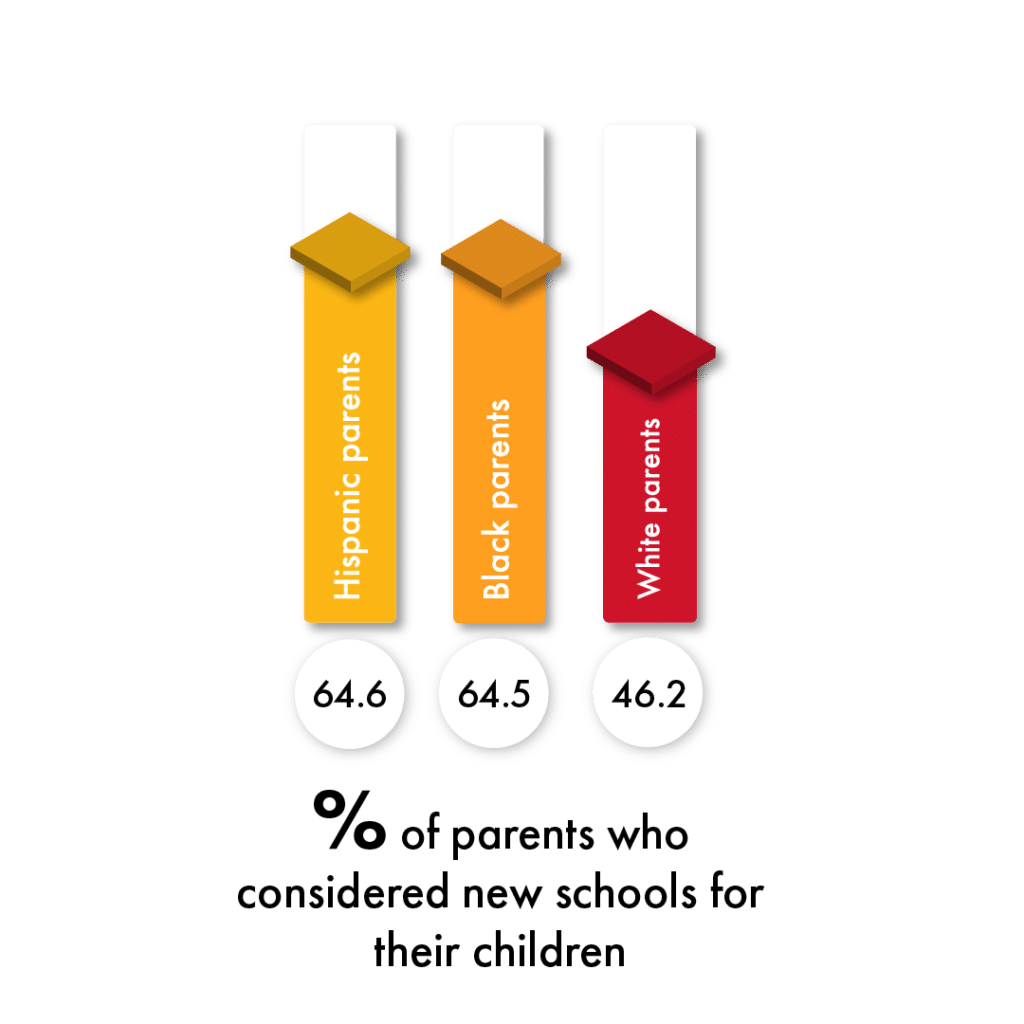
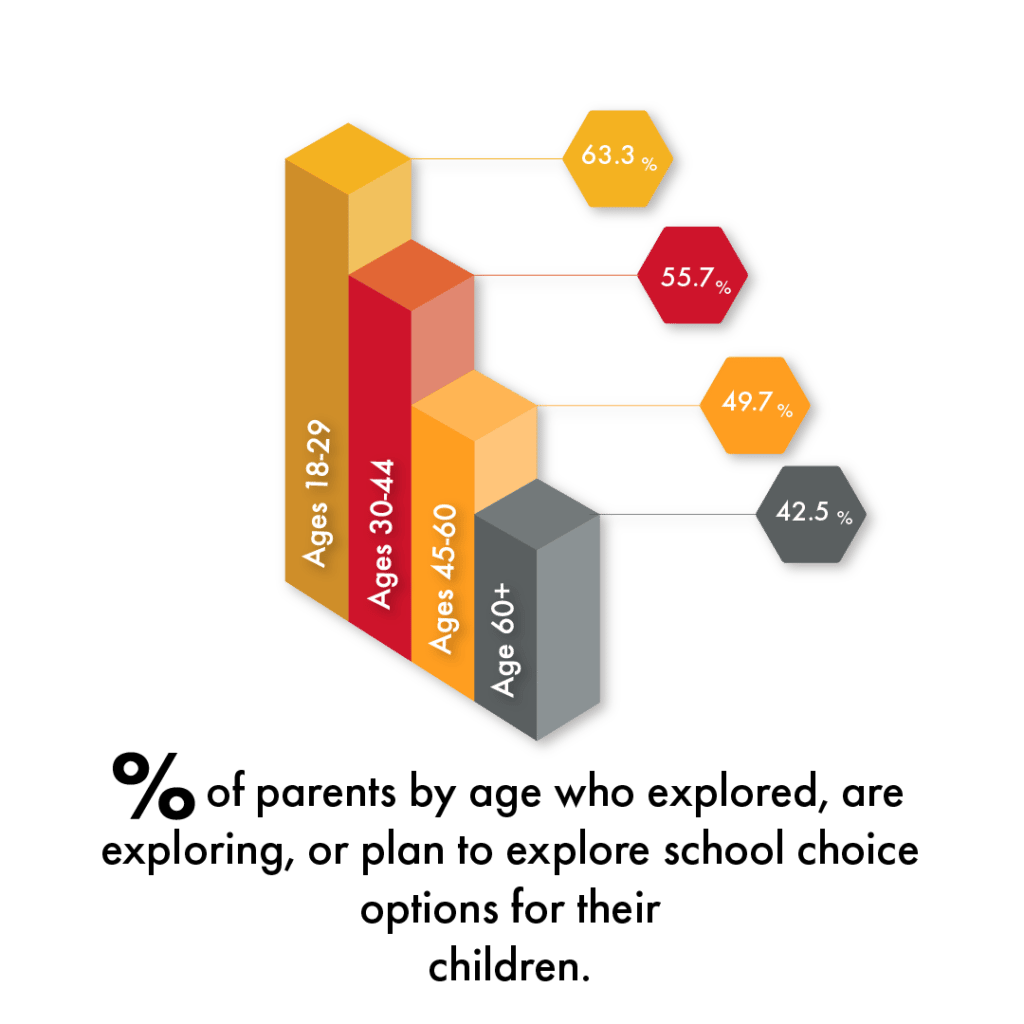
Parents considered a wide variety of education options for their children.
Which of the following statements best describes your view of the different options that may be available for your children’s education? (N=1,651)
| TOTAL | AGE | RACE OR ETHNICITY | ||||||
| 18-29 | 30-44 | 45-60 | > 60 | Black or African American | Hispanic or Latino | White (Non-Hispanic) | ||
| I wish I had more information about the schooling options available for my children. | 64.7% | 75.3% | 65.1% | 58.8% | 56.4% | 71.2% | 75.7% | 57.7% |
| I have all the information I need about the schooling options available for my children. | 35.3% | 24.7% | 34.9% | 41.2% | 43.6% | 28.8% | 24.3% | 42.3% |
Nearly half of parents (45.6 percent) said they considered traditional public schools within their neighborhoods, while 38.2 percent considered public schools outside of their district or zones.
31.5 percent of parents considered public charter schools, 29.1 percent considered private or faith-based schools, 22.9 percent considered homeschooling, 20.8 percent considered full-time online schooling, and 4 percent considered microschooling or pod learning.
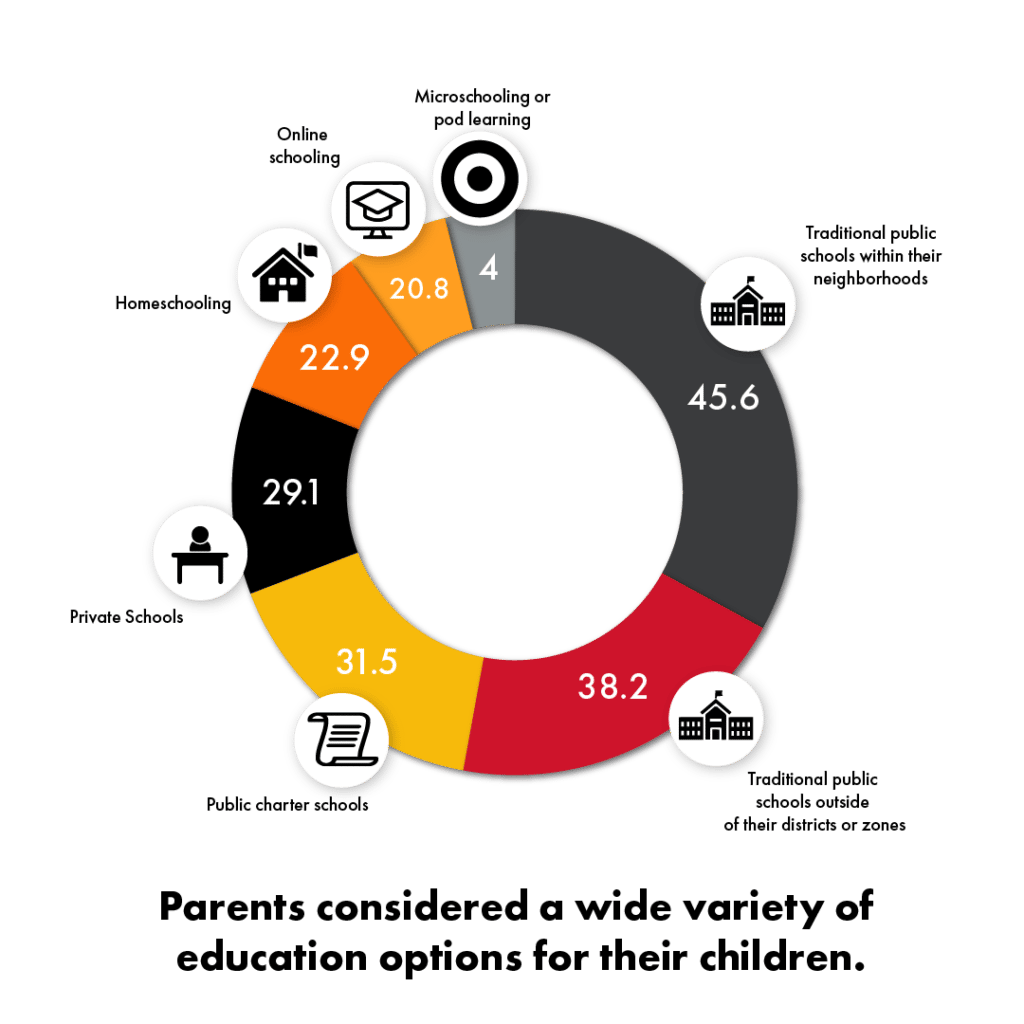
Half of parents want more options for their children’s education, and most parents want more information about school choice options.
48.1 percent of parents, including majorities of Hispanic parents (52.8 percent) and young millennial parents (53.4 percent), said their community does not offer enough education options for families. Only 3.7 percent of all parents said their community offers too many education options.
64.7 percent of parents, including 75.7 percent of Hispanic parents, 71.2 percent of Black parents, and 75.3 percent of young millennial parents, said they “wish they had more information about the schooling options available for [their] children.”
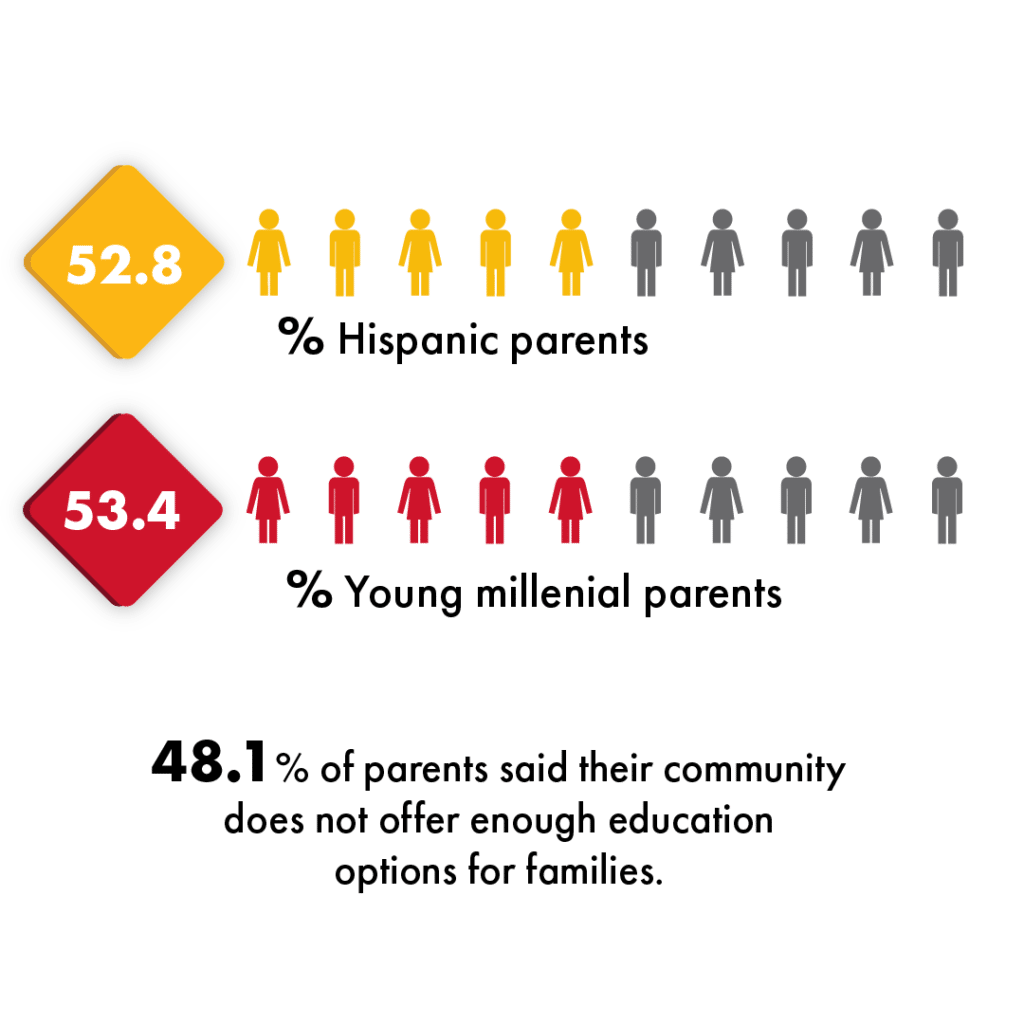
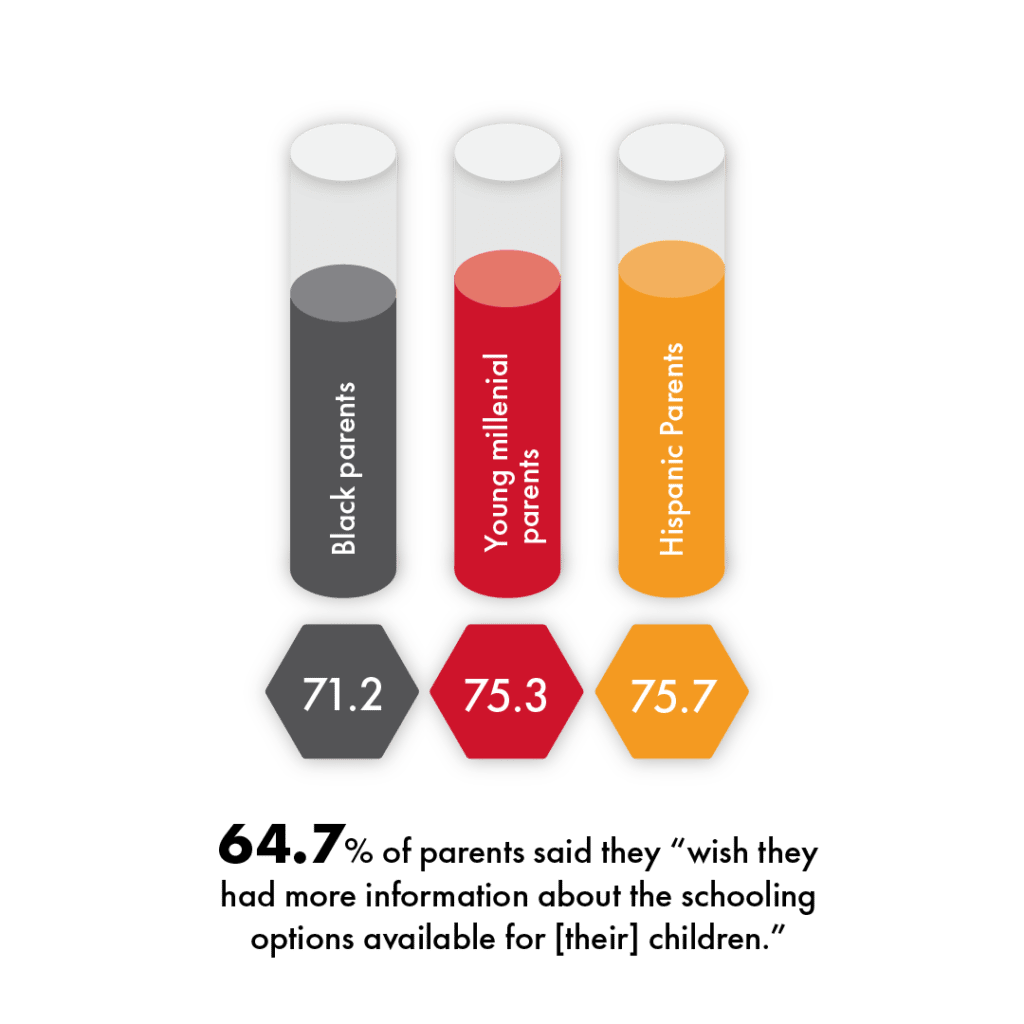
As we talk about school choice, we cannot forget the importance schools play in decisions over buying or renting homes – or ignore the demand for nontraditional options.
68 percent of parents said that when choosing to rent or purchase a residence, it was important for them to find a residence within a specific school district or school zone.
At 74.4 percent, suburban parents were most likely to indicate that a school zone or district was important in their home choice, and 39.6 percent described it as “very important.”
More than a third of parents (35 percent) said their children had pursued out-of-school learning projects in cooperation with other families, including microschooling and pod learning. Black parents (48 percent), Hispanic parents (38.2 percent), and young millennial parents (38.4 percent) were among the most likely to indicate that their children had pursued out-of-school learning projects.
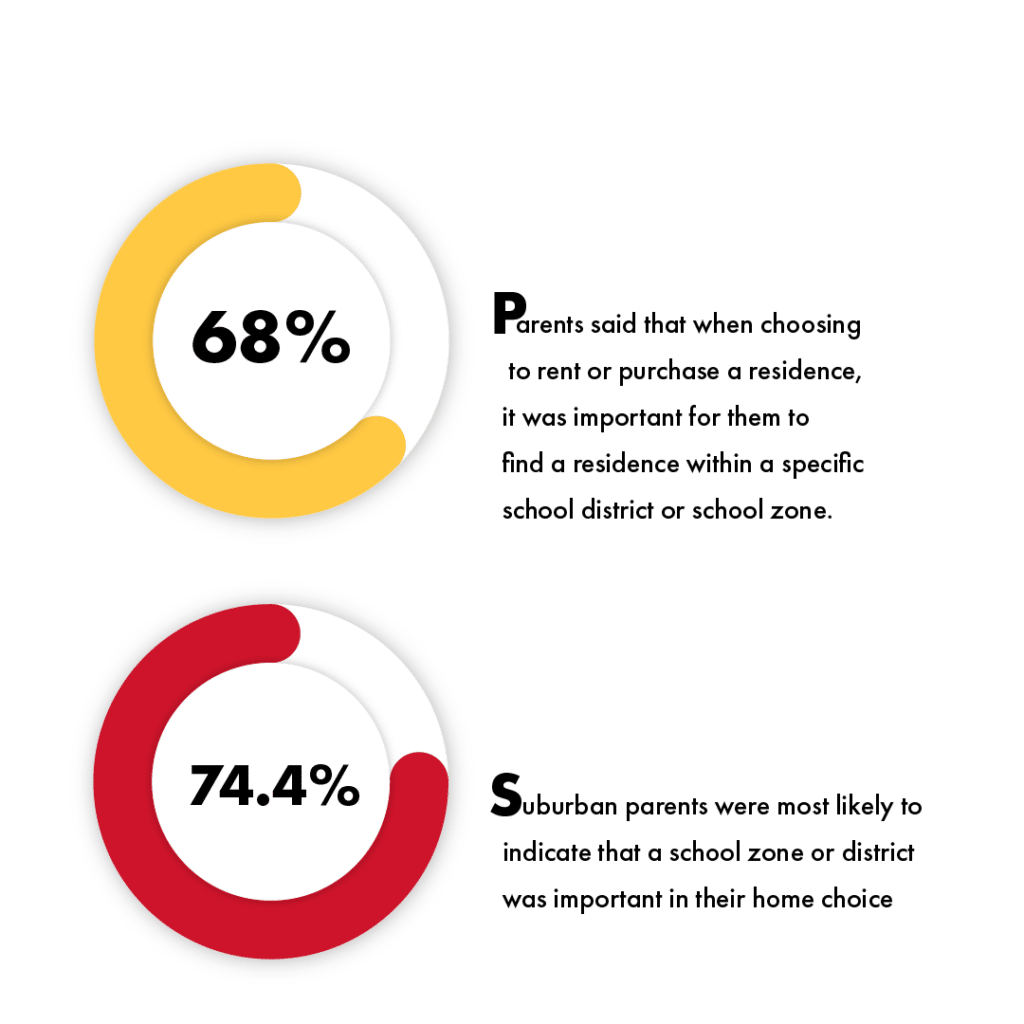
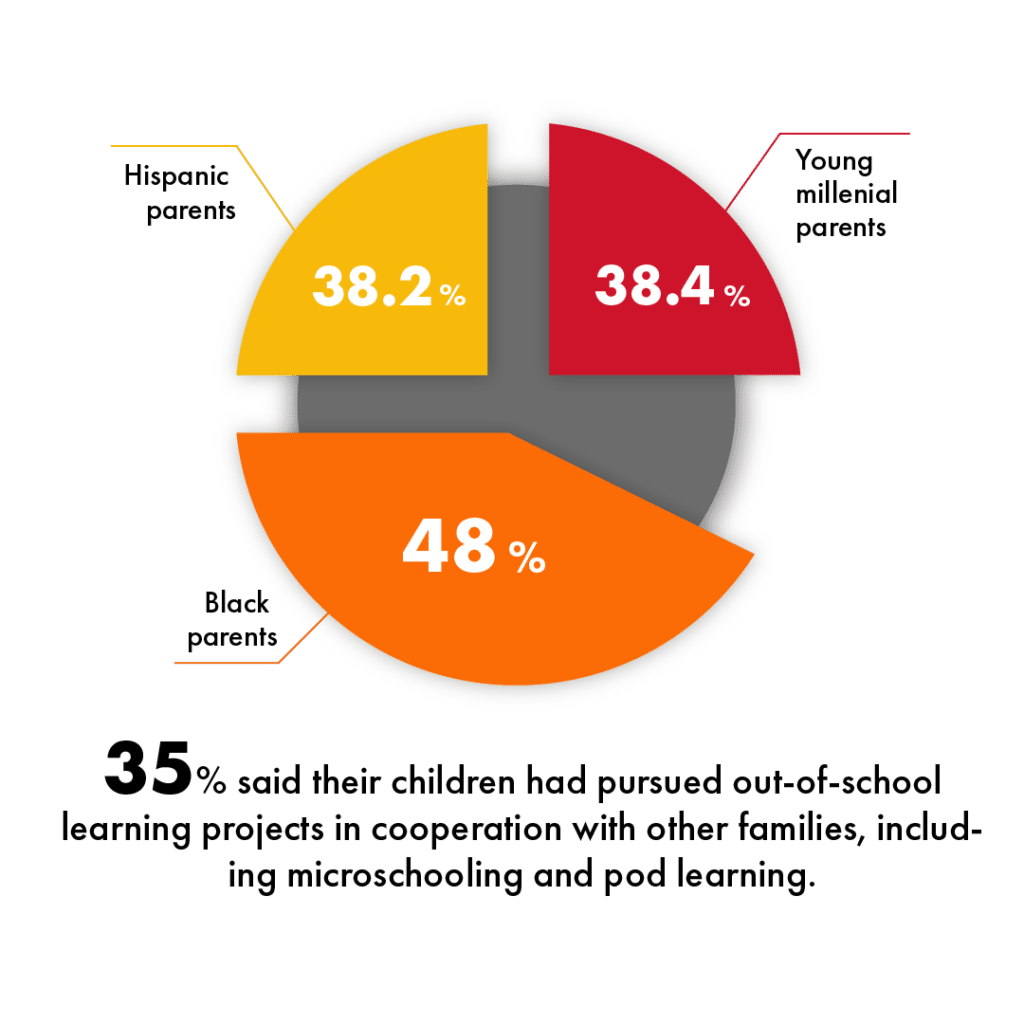
Head to Conoce tus Opciones Escolares‘ site to find our survey analysis in Spanish with focused insights on Hispanic and Latino parents. Find out more about National School Choice Week or how school choice works. If you’re a journalist covering education issues, we invite you to check out our coverage resources.
